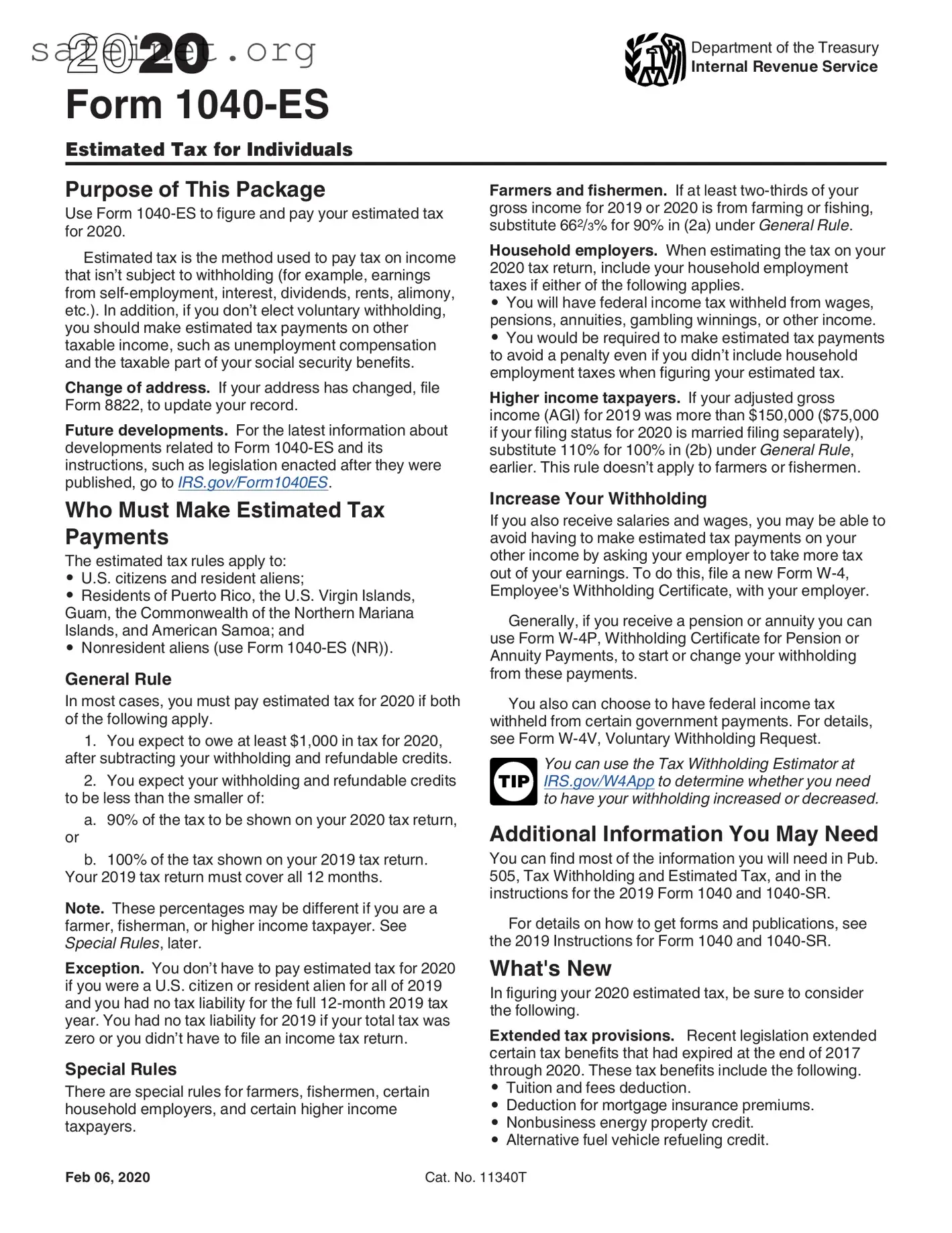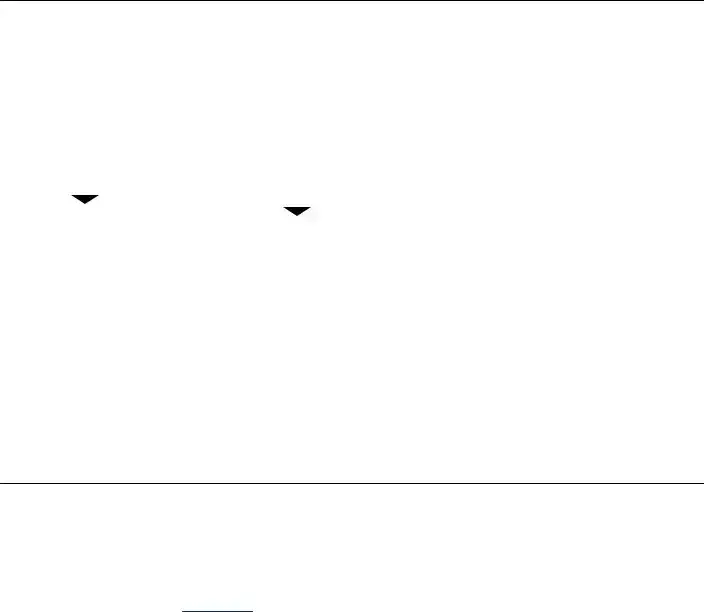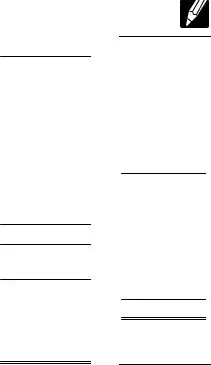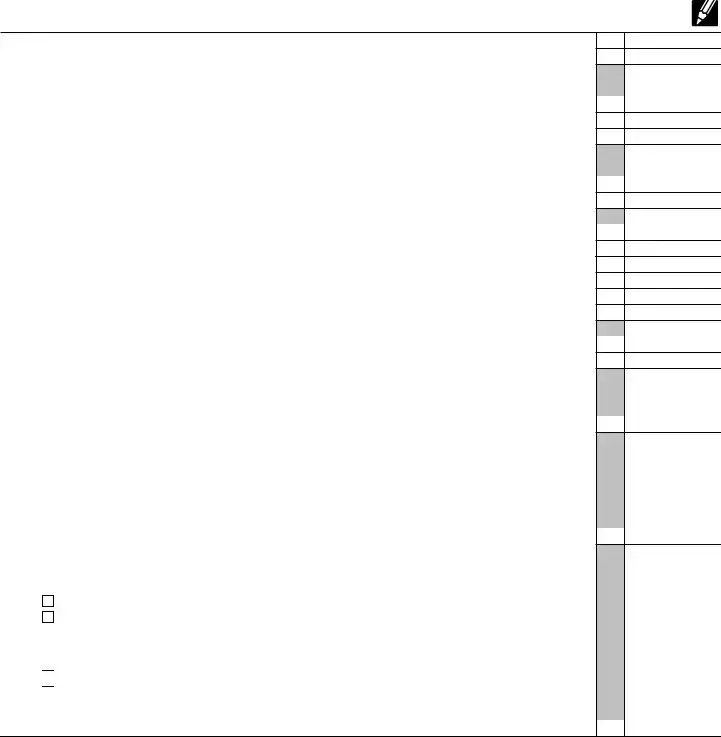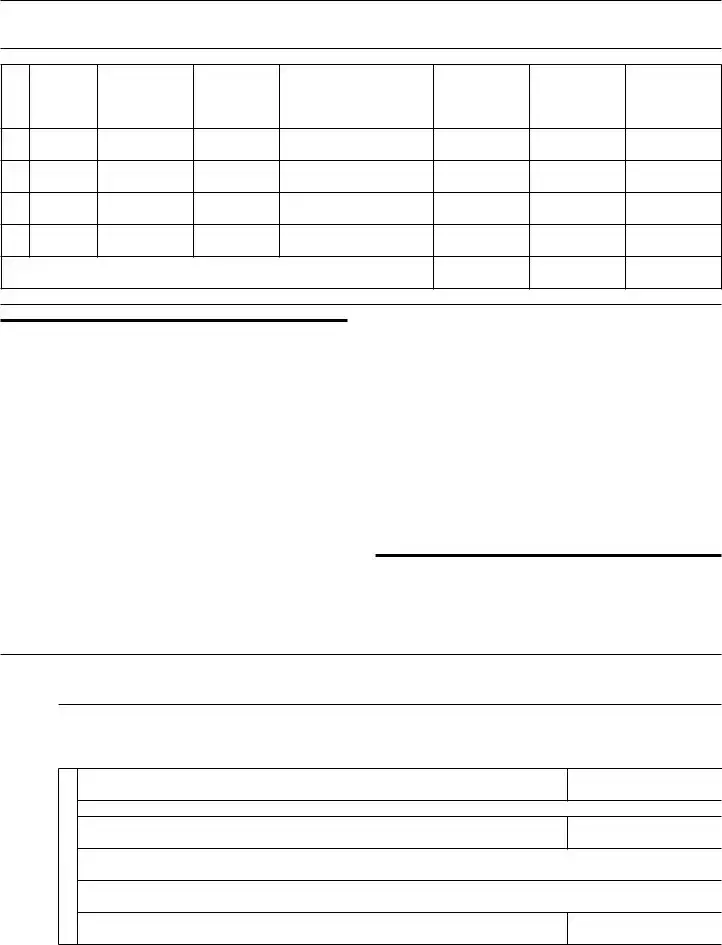|
Purpose of This Package |
Farmers and fishermen. If at least two-thirds of your |
|
Use Form 1040-ES to figure and pay your estimated tax |
gross income for 2019 or 2020 is from farming or fishing, |
|
for 2020. |
substitute 662/3% for 90% in (2a) under General Rule. |
|
|
Estimated tax is the method used to pay tax on income |
Household employers. When estimating the tax on your |
|
|
2020 tax return, include your household employment |
|
that isn’t subject to withholding (for example, earnings |
|
taxes if either of the following applies. |
|
from self-employment, interest, dividends, rents, alimony, |
|
• |
You will have federal income tax withheld from wages, |
|
etc.). In addition, if you don’t elect voluntary withholding, |
|
you should make estimated tax payments on other |
pensions, annuities, gambling winnings, or other income. |
|
• |
You would be required to make estimated tax payments |
|
taxable income, such as unemployment compensation |
|
and the taxable part of your social security benefits. |
to avoid a penalty even if you didn’t include household |
|
employment taxes when figuring your estimated tax. |
|
Change of address. If your address has changed, file |
|
Higher income taxpayers. If your adjusted gross |
|
Form 8822, to update your record. |
|
income (AGI) for 2019 was more than $150,000 ($75,000 |
|
Future developments. For the latest information about |
|
if your filing status for 2020 is married filing separately), |
|
developments related to Form 1040-ES and its |
substitute 110% for 100% in (2b) under General Rule, |
|
instructions, such as legislation enacted after they were |
earlier. This rule doesn’t apply to farmers or fishermen. |
|
published, go to IRS.gov/Form1040ES. |
Increase Your Withholding |
|
|
|
|
|
|
Who Must Make Estimated Tax |
|
If you also receive salaries and wages, you may be able to |
|
Payments |
avoid having to make estimated tax payments on your |
|
The estimated tax rules apply to: |
other income by asking your employer to take more tax |
|
• |
U.S. citizens and resident aliens; |
out of your earnings. To do this, file a new Form W-4, |
|
• |
Residents of Puerto Rico, the U.S. Virgin Islands, |
Employee's Withholding Certificate, with your employer. |
|
Guam, the Commonwealth of the Northern Mariana |
|
Generally, if you receive a pension or annuity you can |
|
Islands, and American Samoa; and |
|
|
use Form W-4P, Withholding Certificate for Pension or |
|
• Nonresident aliens (use Form 1040-ES (NR)). |
|
Annuity Payments, to start or change your withholding |
|
General Rule |
from these payments. |
|
In most cases, you must pay estimated tax for 2020 if both |
|
You also can choose to have federal income tax |
|
of the following apply. |
withheld from certain government payments. For details, |
|
|
1. You expect to owe at least $1,000 in tax for 2020, |
see Form W-4V, Voluntary Withholding Request. |
|
after subtracting your withholding and refundable credits. |
|
|
You can use the Tax Withholding Estimator at |
|
|
2. You expect your withholding and refundable credits |
TIP |
IRS.gov/W4App to determine whether you need |
|
to be less than the smaller of: |
|
|
|
|
|
|
|
to have your withholding increased or decreased. |
|
or a. 90% of the tax to be shown on your 2020 tax return, |
Additional Information You May Need |
|
|
b. 100% of the tax shown on your 2019 tax return. |
You can find most of the information you will need in Pub. |
|
Your 2019 tax return must cover all 12 months. |
505, Tax Withholding and Estimated Tax, and in the |
|
Note. These percentages may be different if you are a |
instructions for the 2019 Form 1040 and 1040-SR. |
|
|
For details on how to get forms and publications, see |
|
farmer, fisherman, or higher income taxpayer. See |
|
|
Special Rules, later. |
the 2019 Instructions for Form 1040 and 1040-SR. |
|
Exception. You don’t have to pay estimated tax for 2020 |
What's New |
|
if you were a U.S. citizen or resident alien for all of 2019 |
In figuring your 2020 estimated tax, be sure to consider |
|
and you had no tax liability for the full 12-month 2019 tax |
|
the following. |
|
year. You had no tax liability for 2019 if your total tax was |
|
Extended tax provisions. Recent legislation extended |
|
zero or you didn’t have to file an income tax return. |
|
Special Rules |
certain tax benefits that had expired at the end of 2017 |
|
through 2020. These tax benefits include the following. |
|
There are special rules for farmers, fishermen, certain |
• |
Tuition and fees deduction. |
|
household employers, and certain higher income |
• |
Deduction for mortgage insurance premiums. |
|
taxpayers. |
• |
Nonbusiness energy property credit. |
|
|
|
|
|
• |
Alternative fuel vehicle refueling credit. |
